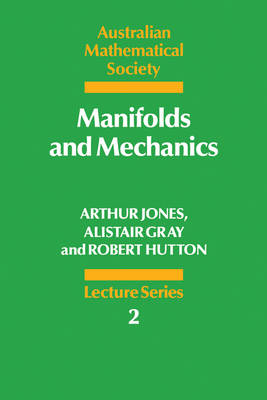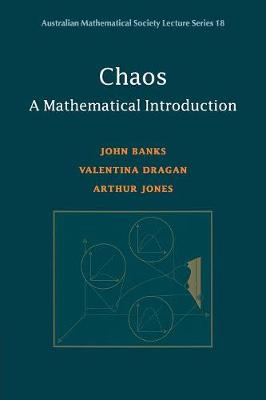Australian Mathematical Society Lecture
4 total works
This book provides an easy introduction to the theory of differentiable manifolds. The authors then show how the theory can be used to develop, simply but rigorously, the theory of Lanrangian mechanics directly from Newton's laws. Unnecessary abstraction has been avoided to produce an account suitable for students in mathematics or physics who have taken courses in advanced calculus.
Modelling with Differential and Difference Equations
by Glenn R. Fulford, Peter G. Forrester, and Arthur Jones
Published 12 June 1997
The real world can be modelled using mathematics, and the construction of such models is the theme of this book. The authors concentrate on the techniques used to set up mathematical models and describe many systems in full detail, covering both differential and difference equations in depth. Amongst the broad spectrum of topics studied in this book are: mechanics, genetics, thermal physics, economics and population studies. Any student wishing to solve problems via mathematical modelling will find that this book provides an excellent introduction to the subject.
Chaos: A Mathematical Introduction
by John Banks, Valentina Dragan, and Arthur Jones
Published 8 May 2003
When new ideas like chaos first move into the mathematical limelight, the early textbooks tend to be very difficult. The concepts are new and it takes time to find ways to present them in a form digestible to the average student. This process may take a generation, but eventually, what originally seemed far too advanced for all but the most mathematically sophisticated becomes accessible to a much wider readership. This book takes some major steps along that path of generational change. It presents ideas about chaos in discrete time dynamics in a form where they should be accessible to anyone who has taken a first course in undergraduate calculus. More remarkably, it manages to do so without discarding a commitment to mathematical substance and rigour. The book evolved from a very popular one-semester middle level undergraduate course over a period of several years and has therefore been well class-tested.
The focus in this text is on mathematical modelling stimulated by contemporary industrial problems involving heat conduction and mass diffusion. These include continuous metal casting, laser drilling, spontaneous combustion of industrial waste, water filtration and crop irrigation. The industrial problems prove to be an excellent setting for the introduction and reinforcement of modelling skills, equation solving techniques, qualitative understanding of partial differential equations and their dynamical properties. Mathematical topics include setting up partial differential equations and boundary conditions, dimensional analysis, scaling, perturbation expansions, boundary value problems, Fourier series, symmetry reductions, Stefan problems and bifurcations. For students of mathematics, engineering, or any other related discipline, this will be a great introduction to modelling the real world.


